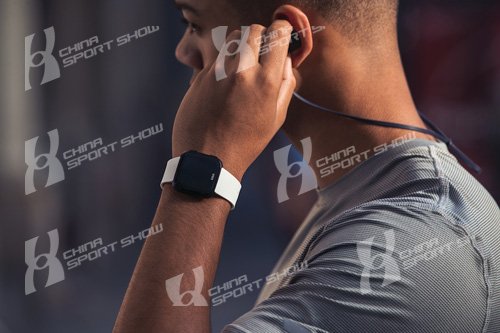Fitbit Beats On Q3 Earnings & Revenue

Global wearables brand Fitbit Inc. on Wednesday reported revenue for the third quarter ended September 29 of $394 million topping Wall Street estimates by $12.3 million.
The company also reported GAAP net loss per share of 1 cent—beating estimates by 5 cents—non-GAAP net income per share of 4 cents, GAAP net loss of $2 million, non-GAAP net income of $10 million, cash flow from operations of $59 million and free cash flow of $47 million for its third quarter of 2018.
“We have been incredibly focused on executing our transition plan, and as a result saw a return to profitability this quarter and are re-affirming our full-year revenue guidance of $1.5 billion. We succeeded in growing our healthcare business by 26 percent and diversifying our revenue to compete in the changing wearables category and saw sequential growth in both tracker and smartwatch devices,” said James Park, co-founder and CEO. “We are now the number-two player in the smartwatch space in the U.S., a category we just entered with zero share only fourteen months ago. We also launched our most advanced tracker yet, Fitbit Charge 3, which is blurring the lines between trackers and smartwatches and is already one of the top-selling devices in the U.S. All this shows the power of the Fitbit brand and our ability to continue to deliver a wearable platform consumers love and that drives positive health outcomes.”
Third Quarter 2018 Financial Highlights
Sold 3.5 million wearable devices. Average selling price increased 3 percent year-over-year to $108 per device driven by the growing mix of smartwatches.
U.S. revenue represented 58 percent of revenue or $230 million, down 6 percent year-over-year.
International revenue represented 42 percent of revenue and increased 10 percent year-over-year to $163 million; EMEA revenue increased 17 percent to $104 million; Americas excluding U.S. revenue declined 2 percent to $25 million and APAC revenue was relatively flat at $34 million, all year-over-year, respectively.
New devices introduced in the past year, Fitbit Versa, Fitbit Charge 3, Fitbit Ace and Fitbit Aria 2, represented 6 percent of revenue.
GAAP gross margin was 39 percent and non-GAAP gross margin was 40.1 percent. Both GAAP and non-GAAP gross margins were negatively impacted by the change in mix towards smartwatches, partially offset by improved warranty costs.
GAAP operating expenses represented 44 percent of revenue, and non-GAAP operating expenses represented 38 percent of revenue.
GAAP impairment charge of $6 million to reflect the write-down of a minority equity investment.
Third Quarter 2018 Operational Highlights
Diversified wearable device revenue from predominately trackers to smartwatches and trackers. Smartwatch revenue grew to 49 percent of revenue from less than 10 percent a year ago.
Refreshed product line up. Versa outsold competitive offerings from each of Garmin, Samsung, Fossil in the U.S. Launched Charge 3 tracker device, the company’s most advanced health and fitness tracker.
Active community of users: 55 percent of the company’s active users viewed Fitbit Feed in the quarter.
58 percent of activations came from new users, while 42 percent came from repeat buyers. Of the repeat buyers, 49 percent were previously inactive for 90 days or greater.
Fourth Quarter 2018 Guidance
Fitbit expects revenue to be greater than $560 million with device sales down and a higher average selling price.
Non-GAAP net income per share of greater than $0.07.
Fitbit expects gross margins to trend slightly higher from the third quarter.
Capital expenditures as a percentage of revenue of approximately 5 percent.
Fitbit anticipates free cash flow to be approximately $90 million.
Non-GAAP effective tax rate of approximately 25 percent but can vary significantly depending on profitability.
Stock-based compensation expense of approximately $24 million and fully diluted share count of approximately 260 million.
Full-Year 2018 Guidance
Fitbit reiterates full-year 2018 revenue guidance of approximately $1.5 billion.
Fitbit expects the average selling price of the company’s devices to rise, offset by a decline in device sales. Fitbit expects tracker device sales to decline and smartwatch device sales to increase.
Fitbit is on-track to deliver or come in under its full year operating expense target of $740 million.
Capital expenditures as a percentage of revenue of approximately 4 percent.
Excluding the impact of the tax refund payment, Fitbit reiterates its free cash flow guidance of approximately ($20) million for 2018. Including the refund payment, free cash flow will be approximately $52 million.
Fitbit expects non-GAAP effective tax rate to be approximately 25 percent but may vary depending on geographic mix of revenue, tax credits and shift to profitability.
Stock-based compensation expense of approximately $98 million and basic/diluted share count of approximately 248/260 million.
Photo courtesy Fitbit
©2008-2023 CHINA SPORT SHOW, All Rights Reserved(京ICP备05083596号-2)



